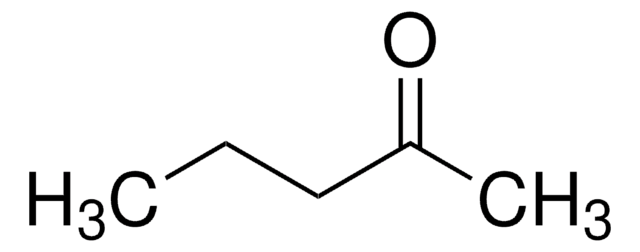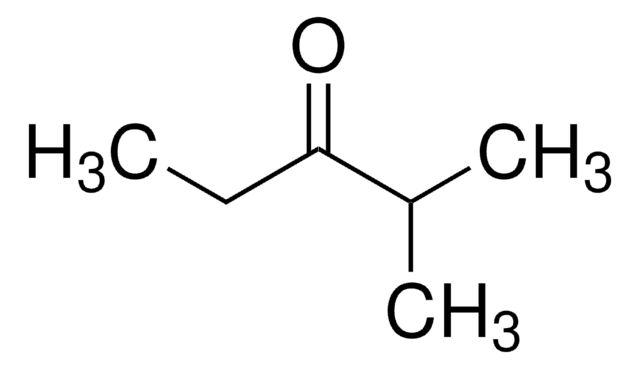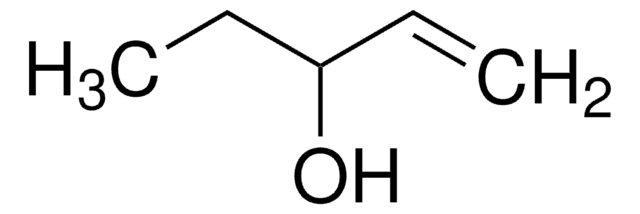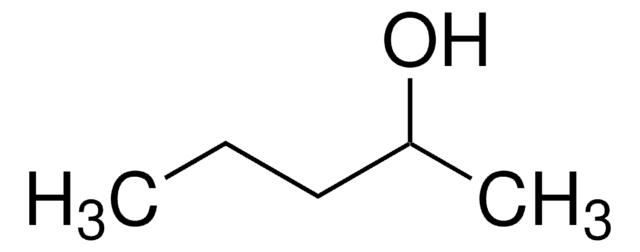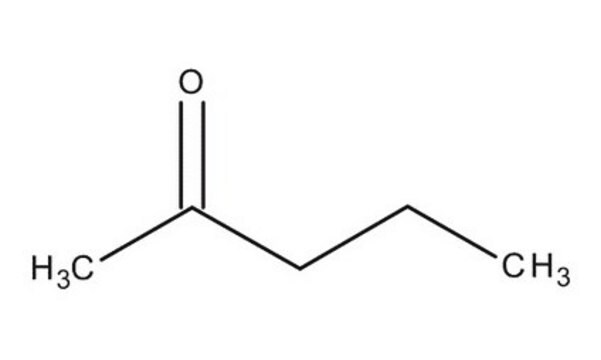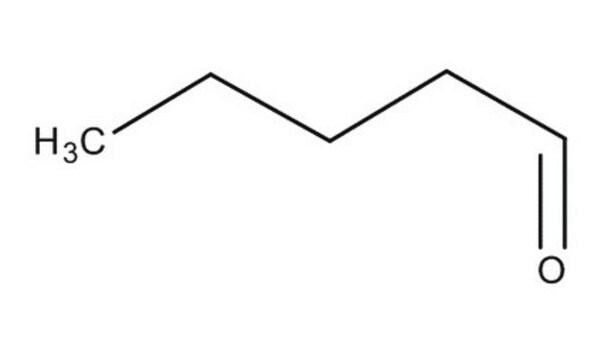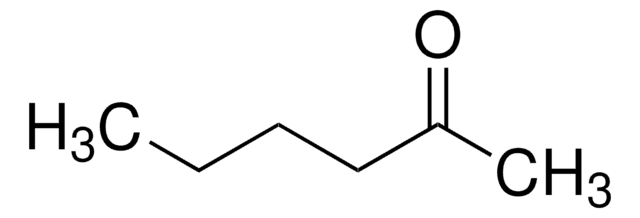471194
2-Pentanone
suitable for HPLC, 99.5%
Synonyme(s) :
Methyl propyl ketone
About This Item
Produits recommandés
Pression de vapeur
27 mmHg ( 20 °C)
Niveau de qualité
Pureté
99.5%
Forme
liquid
Température d'inflammation spontanée
941 °F
Limite d'explosivité
8.2 %
Technique(s)
HPLC: suitable
Impuretés
<0.050% water
Résidus d'évap.
<0.0003%
Indice de réfraction
n20/D 1.39 (lit.)
Point d'ébullition
101-105 °C (lit.)
Pf
−78 °C (lit.)
Solubilité
water: 72.6 g/L at 20 °C (OECD Test Guideline 105)
Densité
0.809 g/mL at 25 °C (lit.)
λ
H2O reference
Absorption UV
λ: 330 nm Amax: 1.00
λ: 340 nm Amax: 0.10
λ: 350 nm Amax: 0.01
λ: 370-400 nm Amax: 0.005
Application(s)
food and beverages
Chaîne SMILES
CCCC(C)=O
InChI
1S/C5H10O/c1-3-4-5(2)6/h3-4H2,1-2H3
Clé InChI
XNLICIUVMPYHGG-UHFFFAOYSA-N
Vous recherchez des produits similaires ? Visite Guide de comparaison des produits
Catégories apparentées
Mention d'avertissement
Danger
Mentions de danger
Conseils de prudence
Classification des risques
Acute Tox. 4 Oral - Eye Irrit. 2 - Flam. Liq. 2
Code de la classe de stockage
3 - Flammable liquids
Classe de danger pour l'eau (WGK)
WGK 1
Point d'éclair (°F)
46.4 °F - closed cup
Point d'éclair (°C)
8 °C - closed cup
Certificats d'analyse (COA)
Recherchez un Certificats d'analyse (COA) en saisissant le numéro de lot du produit. Les numéros de lot figurent sur l'étiquette du produit après les mots "Lot" ou "Batch".
Déjà en possession de ce produit ?
Retrouvez la documentation relative aux produits que vous avez récemment achetés dans la Bibliothèque de documents.
Les clients ont également consulté
Notre équipe de scientifiques dispose d'une expérience dans tous les secteurs de la recherche, notamment en sciences de la vie, science des matériaux, synthèse chimique, chromatographie, analyse et dans de nombreux autres domaines..
Contacter notre Service technique
